The pub sign originated in Richard II’s 1393 Royal Act: ‘whosoever shall brew ale in the town with the intention of selling it must hang up a sign’. Signs were used instead of lettering, with many coming from the Bestiary – a compendium of ‘beasts’. It was believed that the Unicorn’s horn could detect poison, when dipped in a poisoned cup, and render the drink harmless. It is also possible that the Unicorn Inn was named in the early 17th century, during the reign of James I (who visited Ripon in 1617), when the mythical horned beast was added to the royal coat of arms.
A plaque documenting the history of The Unicorn Hotel.
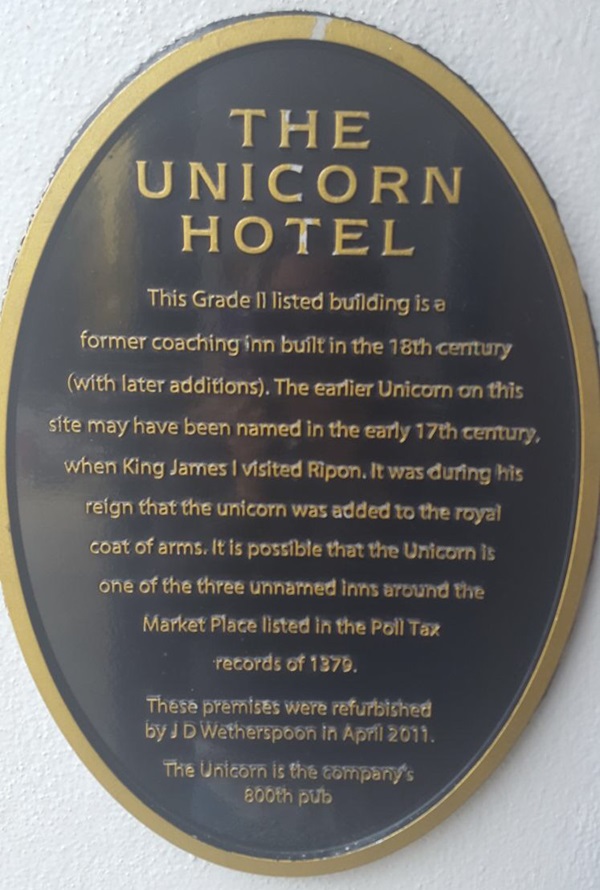
The plaque reads: This Grade II listed building is a former coaching inn built in the 18th century (with later additions). The earlier Unicorn on this site may have been named in the early 17th century, when King James I visited Ripon. It was during his reign that the unicorn was added to the royal coat of arms. It is possible that the Unicorn is one of the three unnamed inns around the Market Place listed in the Poll Tax records of 1379.
These premises were refurbished in J D Wetherspoon in April 2011.
The Unicorn is the company’s 800th Pub.
Photographs, an illustration and text about the Unicorn in the 18th century.
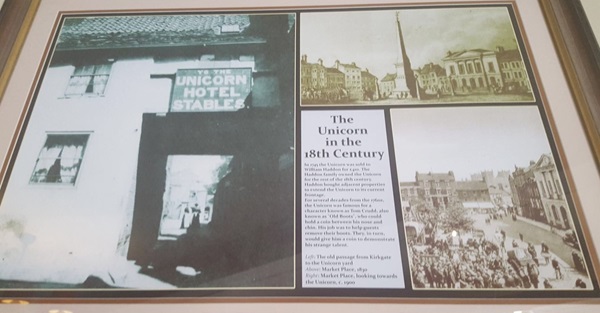
The text reads: In 1745 the Unicorn was sold to William Haddon for £410. The Haddon family owned the Unicorn for the rest of the 18th century. Haddon bought adjacent properties to extend the Unicorn to its current frontage.
For several decades from the 1760s, the Unicorn was famous for a character known as Tom Crudd, also known as “Old Boots”, who could hold a coin between his nose and chin. His job was to help guests remove their boots. They, in turn, would give him a coin to demonstrate his strange talent.
Left: The old passage from Kirkgate to the Unicorn yard
Above: Market Place, 1830
Right: Market Place, looking towards the Unicorn, c1900.
An illustration and text about the Golden Age of stagecoach travel.
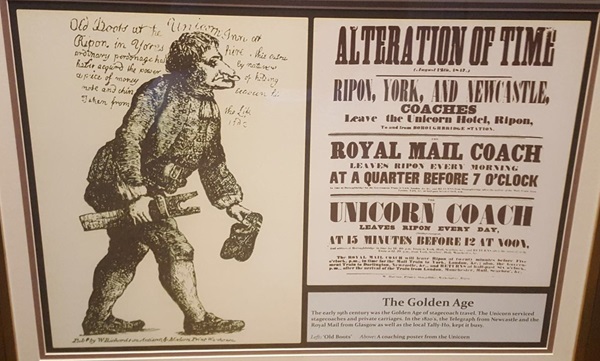
The text reads: The early 19th century was the Golden Age of stagecoach travel. The Unicorn serviced stage coaches and private carriages. In the 1820s, the Telegraph from Newcastle and the Royal Mail from Glasgow as well as the local Tally-Ho, kept it bust.
Left: ‘Old Boots’
Above: A coaching poster from the Unicorn.
A statue entitled The Unicorn, by George McGill.
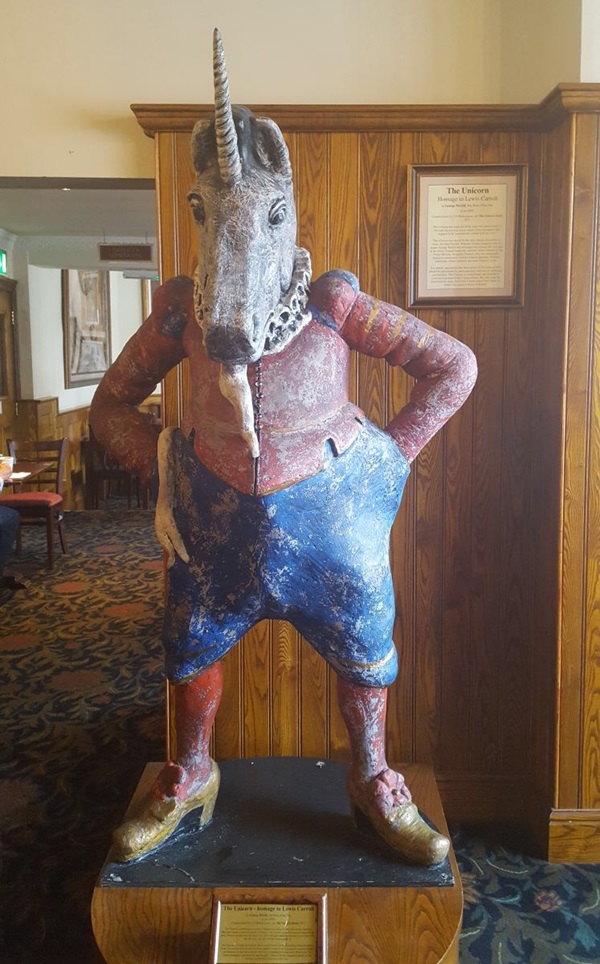
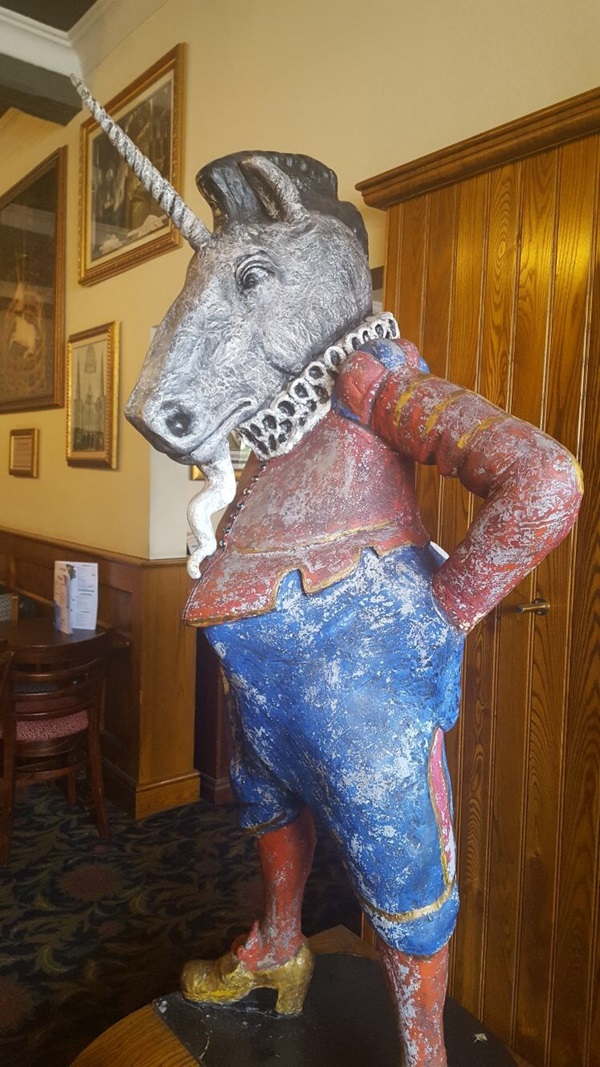
This Unicorn has leapt out of the pages of Lewis Carroll’s Through the Looking Glass, where Alice encounters him engaged in his immemorial combat with the Lion.
The Unicorn was drawn by the most famous illustrator of Alice, Sir John Tenniel. Whereas Tenniel imagined him on paper, George McGill has envisaged the creature life size and in the round. Tenniel based the ‘attitude’ of his Unicorn on the Prime Minister, Benjamin Disraeli, who was perpetually locked in controversy with his liberal opponent, William Gladstone, whose character pervades Tenniel’s Lion.
It is wholly appropriate that these giants of Victorian politics should be represented by such imposing stalwarts of mythology and heraldry. The unicorn is a particularly apt creature to confront customers at the Unicorn Hotel. Not only does the hotel bear his name, but Lewis Carroll stayed here when his father was canon of Ripon Cathedral.
External photograph of the building – main entrance.
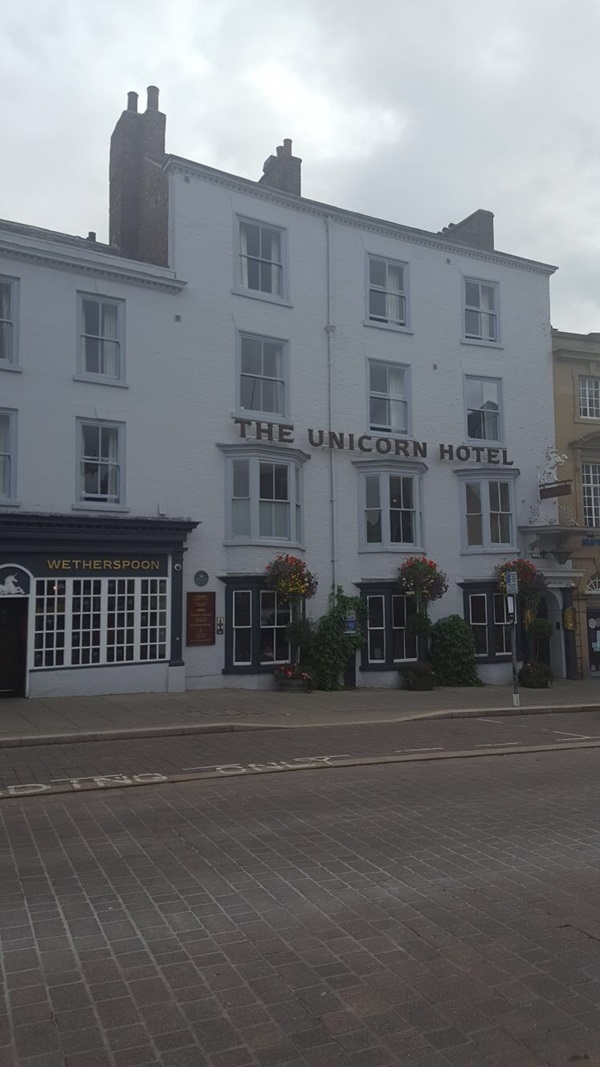
If you have information on the history of this pub, then we’d like you to share it with us. Please e-mail all information to: pubhistories@jdwetherspoon.co.uk